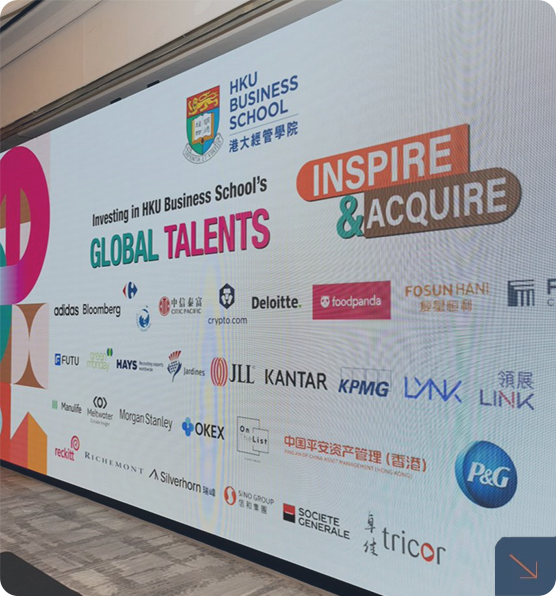人工智慧图像生成技术日新月异,推动市场营销、广告设计及艺术创作等领域的创新。港大经管学院创新及资讯管理学教授蒋镇辉早前联同其人工智慧大模型评测团队对22款主流AI模型进行评估,深入剖析不同AI模型在图像生成方面的表现及潜在风险。

3917 8351
KK 804
- PhD in Business Administration (University of British Columbia), 2004
- Master of Management (Tsinghua University), 1999
- Bachelor of Engineering and Bachelor of Economics (Tsinghua University), 1997
Zhenhui (Jack) Jiang is a professor of Innovation and Information Management and the Padma and Hari Harilela Professor in Strategic Information Management at HKU Business School. He formerly served as the Area Head of Innovation and Information Management. Prior to joining the University of Hong Kong, he was a full professor of Information Systems and Analytics at School of Computing, National University of Singapore (NUS), where he also served on the Faculty Promotion and Tenure Committee. Prof. Jiang was Chair of SIGHCI of Association for Information Systems (2015-18). His research interests include human computer interaction, artificial intelligence, information privacy, electronic/mobile commerce, and social media.
Prof. Jiang’s research explores the broad economic and behavioral impacts of cutting-edge information technologies (IT) as well as the effective user interface design of such technologies. His work addresses significant issues in AI, digital innovation, e-commerce, information privacy, social media, and healthcare. Professor Jiang currently serves as a Senior Editor for MIS Quarterly. He has also contributed to editorial boards of many leading Information Systems journals such as Journal of AIS (Senior Editor), Information Systems Research (Associate Editor), MIS Quarterly (Associate Editor), IEEE Transactions of Engineering Management, among others. His research contributions are published in premier business journals, such as MIS Quarterly, Information Systems Research, Management Science, and Journal of MIS. Moreover, his work has also appeared in top-tier Computer Science conferences, like CHI. Prof. Jiang has successfully secured research grants totaling approximately US$3 million as the Principal Investigator and an additional around US$4 million as a Co-Investigator.
Prof. Jiang has taught extensively across MBA, EMBA, DBA, and executive education programs at prestigious institutions such as HKU Business School, NUS School of Computing, NUS Business School, NUS Lee Kuan Yew School of Public Policy, and the School of Economics and Management at Tsinghua University. He also held positions as a Visiting Professor at Peking University and as a visiting scholar at MIT Sloan School of Management.
Digital Innovation, e-Business Models, Experimental Research Methodology, Applications for Big Data Analytics, Human Computer Interaction
Artificial Intelligence, Human Computer/AI Interaction, Social Media, Information Privacy, Information Search Analytics, Visual Analytics, User Experience Design, Electronic commerce, and Experimental Design.
- Senior Editor: MIS Quarterly (since 2022)
- Senior Editor: Journal of AIS (2017 – 2020)
- Associate Editor: Information Systems Research (2019 – 2022)
- Associate Editor: MIS Quarterly (2012-2015)
- Editorial Board Member: IEEE Transactions on Engineering Management (2011 – 2016)
- Associate Editor: Journal of AIS (2009-2012 and 2016 – 2017)
- Lu, Y., Li, X, and Jiang, Z. “Online-Offline Self-Identity Overlap and Consumer Decision to Acquire Digital-Physical Twins in the Metaverse,” forthcoming Journal of the Association for Consumer Research.
- Alashoor, T., Keil, M., Jiang, Z. and Saffarizadeh, K., “Privacy Concerns and Data Donations: Do societal Benefits Matter?”, forthcoming MIS Quarterly.
- Luo, C., Jiang, Z., Li, X., Yi, C. and Tucker, C. “Choosing to Discover the Unknown: The Effects Of Choice On User Attention To Online Video Advertising,” Management Science, Vol. 70, No. 10, 2024, pp. 6983- 7003.
- Jiang, H., Siponen, M., Jiang, Z. and Tsohou, A. “The Impact of Internet Monitoring on Employees’ Cyberloafing and Organizational Citizenship Behavior: A Longitudinal Field Quasi-Experiment,” Information Systems Research, Vol. 35, No. 3, 2024, pp.1175-1194.
- Yi, C., Jiang, Z. and Zhou, M. “Investigating The Effects Of Product Popularity And Time Restriction: The Moderating Role Of Consumers’ Goal Specificity,” Production and Operations Management, 32(9), 2023, pp. 2723-2739.
- Liu, Y., Jiang, Z. and Choi, B. “Pushing Yourself Harder: The Effects of Mobile Touch Modes on Users’ Self-Regulation,” Information Systems Research, Vol. 34, No. 3, 2023, pp. 996-1016.
- Li, M., Jiang, Z., and Ma, G. “The Puzzle of Experience vs. Memory: Peak-end Theory and Strategic Gamification Design in M-Commerce,” Information and Management, Vol. 60, No. 2, 2023, pp. 103749.
- Yi, C., Jiang, Z., Li, X. and Lu, X. “Leveraging User-Generated Content for Product Promotion: The Effects of Firm-highlighted Reviews,” Information Systems Research, Vol. 30, No. 3, 2019, pp. 711-725.
- Liu, Y, Jiang, Z. and Chan, H. C. “Touching Products Virtually: Facilitating Consumer Mental Imagery with Gesture Control and Visual Presentation,” Journal of Management Information Systems, Vol. 36, Issue 3, 2019, pp. 823-854.
- Yi, C., Jiang, Z., and Benbasat, I. “Designing for Diagnosticity and Serendipity: An Investigation of Social Product-Search Mechanisms,” Information Systems Research, Vol. 28, No. 2, 2017, pp. 413–429.
- Jiang, Z., Wang, W., Tan, B. and Yu, J. “The Determinants and Impacts of Aesthetic Value in Users’ First Interaction with Websites,” Journal of Management Information Systems, Vol. 33, No. 1, 2016, pp. 229-259.
- Choi, B., Kim, S., and Jiang, Z. “Influence of Firm’s Recovery Endeavors upon Privacy Breach on Online Customer Behavior,” Journal of Management Information Systems, Vol. 33, No. 3, 2016, pp. 904-933.
- Yue, Y., Ma, X. and Jiang, Z. “Influence of Content Layout and Motivation on Users’ Herd Behavior in Social Discovery,” Proceedings of the ACM Conference on Human Factors in Computing Systems (CHI), San Jose, USA, 2016.
- Choi, B., Jiang, Z., Xiao, B. and Kim, S. “Embarrassing Exposures in Online Social Networks: An Integrated Perspective of Relationship Bonding and Privacy Invasion,” Information Systems Research, Vol. 26, No. 4, December 2015, pp. 675-694.
- Yi, C., Jiang, Z. and Benbasat, I. “Enticing and Engaging Consumers Via Online Product Presentations: The Effects Of Restricted Interaction Design,” Journal of Management Information Systems, Vol. 31, No. 4, Spring 2015, pp. 213–242.
- Yue, Y., Ma, X. and Jiang, Z. “Share your View: Impact of Co-Navigation Support and Status Composition in Collaborative Online Shopping,” Proceedings of the ACM Conference on Human Factors in Computing Systems (CHI), Toronto, Canada, 2014.
- Jiang, Z., Heng, C. and Choi, B. “Privacy Concerns and Privacy-Protective Behavior in Synchronous Online Social Interactions,” Information Systems Research, Vol. 24, No. 3, September 2013, pp. 579-595.
- Yi, C., Jiang, Z. and Benbasat, I. “Enticing Consumers via Incomplete Product Experience: An Investigation of Online Product Interactivity Designs,” Proceedings of the ACM Conference on Human Factors in Computing Systems (CHI), Vancouver, Canada, 2011
- Sim, D., Ma, X., Zhao, S., Khoo, J. T., Bay, S. L., and Jiang, Z. “Farmer’s Tale: A Facebook Game to Promote Volunteerism,” Proceedings of the ACM Conference on Human Factors in Computing Systems (CHI), Vancouver, Canada, 2011.
- Zhu, L., Benbasat, I. and Jiang, Z. (equal contribution) “Let’s Shop Online together: An Emphirical Investigation of Collaborative Online Shopping Support,” Information Systems Research, Vol. 21, No. 4, pp. 872-891, 2010.
- Chan, J., Jiang, Z. and Tan, B. “Understanding Pop-up Advertising: Impact of Exposure Time, Advertising Intent, and Brand Image,” IEEE Transactions on Engineering Management, Vol. 57, No. 3, pp. 365-379, 2010.
- Jiang, Z., Chan, J., Tan, B., and Chua, W. “Effects of Interactivity on Website Involvement and Purchase Intention,” Journal of the Association for Information Systems, Vol. 11, Issue 1, 2010, pp. 34-59.
- Jiang, Z. and Benbasat, I. “Investigating the Influence of the Functional Mechanisms of Online Product Presentations,” Information Systems Research, Vol. 18, No. 4, 2007, pp. 454-470.
- Jiang, Z. and Benbasat, I. “The Effects of Presentation Formats and Task Complexity on Online Consumers’ Product Understanding,” MIS Quarterly Vol. 31, No. 3, 2007, pp. 475-500.
- Jiang, Z. Wang, W. and Benbasat, I. “Multimedia-based Interactive Advising Technology for Online Consumer Decision Support,” Communications of the ACM, Vol. 48, No. 8, 2005, pp. 92-98.
- Jiang, Z. and Benbasat, I. “Virtual Product Experience: Effects of Visual and Functional Control of Products on Perceived Diagnosticity and Flow in Electronic Shopping,” Journal of Management Information Systems, Vol. 21, No.3, Winter 2004-5, pp. 111-147.
Online video platforms face the challenge of balancing the needs of their users with those of their advertisers. Although users typically prefer to have less intrusive ads, advertisers aim to effectively catch user attention. This paper investigates how the provision of ad choice affects the effectiveness of video advertising. We argue that allowing users to choose an ad to view may trigger a “conjecture-formation-and-confirmation” process that motivates users to pay more attention to the selected ad. Two online experiments and four laboratory experiments are conducted to test the theorized underlying mechanism of the ad choice effect. Study 1 finds when users are unfamiliar (versus familiar) with the content of ad options (i.e., they need to make conjectures about ad content), ad choice is more likely to increase user attention to the chosen ad. Study 2 and Study 3 show that the impact of ad choice on user attention is more likely to be positive when users are enabled to make conjectures about ad content, such as when choice options provide more relevant information about ad content. Study 4a and Study 4b provide more direct support for the underlying mechanism by showing that the ad choice effect is attenuated when users cannot form conjectures about ad content at the choice stage. Study 5 further demonstrates that the positive effect of ad choice is robust across different ad settings. Taken together, these studies show ad choice is more likely to boost the effectiveness of video advertising when the “conjecture-formation-and-confirmation” process is triggered.
自 ChatGPT 问世以来,大语言模型LLM(Large Language Model)迅速成为全球科技竞赛的焦点。LLM将被应用到越来越多领域,成为AI发展的新蓝海。目前,美国在基础技术开发和创新应用上具有明显优势,其模型往往在技术前沿上表现出色;而中国的模型更强调针对本土语言环境的优化和实际应用的适应性。如何在两国的竞争中找到平衡点并推动合作,将成为未来几年的发展关键。
自 ChatGPT 问世以来,大语言模型LLM(Large Language Model)迅速成为全球科技竞赛的焦点。LLM将被应用到越来越多领域,成为AI发展的新蓝海。目前,美国在基础技术开发和创新应用上具有明显优势,其模型往往在技术前沿上表现出色;而中国的模型更强调针对本土语言环境的优化和实际应用的适应性。如何在两国的竞争中找到平衡点并推动合作,将成为未来几年的发展关键。
截至7月底,国内共推出超300个大模型。经过大模型数量之争的上半场,下半场中国大模型该如何押宝?“持续稳定的政策支持、庞大的算力规模和广阔的应用场景是中国独特的竞争优势和巨大的发展潜力。”蒋镇辉教授认为,大模型将从数量到更重视应用端发展。
生成式人工智能(AI)工具发展日新月异,香港大学经济及工商管理学院今日(12日)发表一项人工智能大语言模型评测综合排行榜,通过港大深圳研究院建立评分系统,比较十多款大 模型表现,显示由中国科企百度开发的「文心一言」,在中文语境下综合得分最高,但在「通用语言能力」却跑输「ChatGPT4-Turbo」,而大部分国产模型在英文 语境下表现均处于「稍微劣势」。
Many mobile applications use push notifications and reminders to explicitly educate, remind, and motivate users to perform healthy behaviors. However, users do not always act according to these explicit digital interventions. Our study investigates whether users’ self-regulation can be implicitly facilitated with a proper mobile interaction design. Specifically, we investigate the impacts of two touch modes that are supported by force-based interaction technology, that is, pressing and tapping. Drawing on the theory of embodied cognition, which suggests that people automatically infer meanings from their bodily actions, we conjecture that pressing, compared with tapping, enhances self-regulation because the action of pressing on the touchscreen embodies resolute approach motivation toward goals. We test our hypotheses in three experiments. The first experiment investigates beverage choices on a mobile app; the second experiment examines goal setting on a fitness app; and the third experiment focuses on personal hygiene learning on a mobile education app. The results from the three experiments show that pressing actions can improve users’ self-regulation in selecting a healthier but less tasty beverage (Study 1), setting higher exercise goals and performing more physical exercise (Study 2), and reducing lapses in maintaining personal hygiene (Study 3). In addition, such effects were more salient among users with a higher level of health knowledge and a promotion-focused health orientation. This study contributes to healthcare IT research by showing that mobile interaction can be leveraged to nudge users toward enhanced self-regulation.
人们的生活作息规律是由生理时钟和社交时钟共同构建而成。不过,人们的社交时钟经常偏离生理时钟(例如:为了工作或学习,比睡到自然醒早起;为了夜班工作或赶上项目完成期限而熬夜)— 此现象被称为「社交时差」。社交时差如何影响消费者行为?研究的工作数据和实验结果显示,由于处于社交时差的消费者往往对社交互动不太感兴趣,因此社交时差会减少炫耀性的消费行为。然而,此效应在以下情况会有所减弱:当消费者与熟悉的人而非陌生人进行社交互动;当他们的炫耀性消费行为不会引起社交圈子的关注;以及当他们倾向于私人场合中使用奢侈品。
User-generated content (UGC) is increasingly used in the marketing communication mix for promoting products. This research investigates how firms can actively manage consumer-generated reviews in the form of highlighting authentic reviews at firms’ discretion. Whereas highlighting a positive review is expected to lead to positive product evaluations, this practice may elicit consumers’ skepticism if consumers are explicitly informed of the promotional intent of the firm. In three studies, we examine the effect of presenting a firm-highlighted review on consumers’ consumption intention and behavior. Our findings confirm that highlighting a positive consumer review can effectively attract consumers’ attention to this review. However, the heightened attention does not always lead to higher consumption likelihood. In particular, the extremity of a highlighted review will interact with the variance of the review context as well as the reputation of the firm being reviewed to determine the effect of the firm-highlighting practice on consumers’ consumption behavior. When other reviews convey mixed opinions or when the firm has not established a strong reputation, highlighting a positive but less extreme review may effectively improve the likelihood of consumption, but highlighting a review that is extremely positive will not.
Gesture-based interaction has greatly changed the way in which we interact with online products by allowing users to control digital systems with hand movements. This study investigates how gesture-based interaction modes, namely, mid-air gesture and touchscreen gesture, compared with mouse-based interaction, affect consumers’ virtual product experiences (VPE) by eliciting mental imagery (i.e., haptic imagery and spatial imagery). Furthermore, we explore how visual product presentation can be designed to facilitate different types of interaction modes. Through a lab experiment, we find that touchscreen gesture outper- forms mid-air gesture and mouse-based interaction in terms of eliciting haptic imagery, and this effect is mitigated when 3D presentation is used. We also find that mid-air gesture outperforms touchscreen gesture and mouse-based interaction in terms of eliciting spatial imagery when 3D presentation is used. Both haptic imagery and spatial imagery can further reduce consumers’ product uncertainty. Our results extend prior work on interactivity design of VPE and further contribute to the emerging literature on gesture-based interaction.





